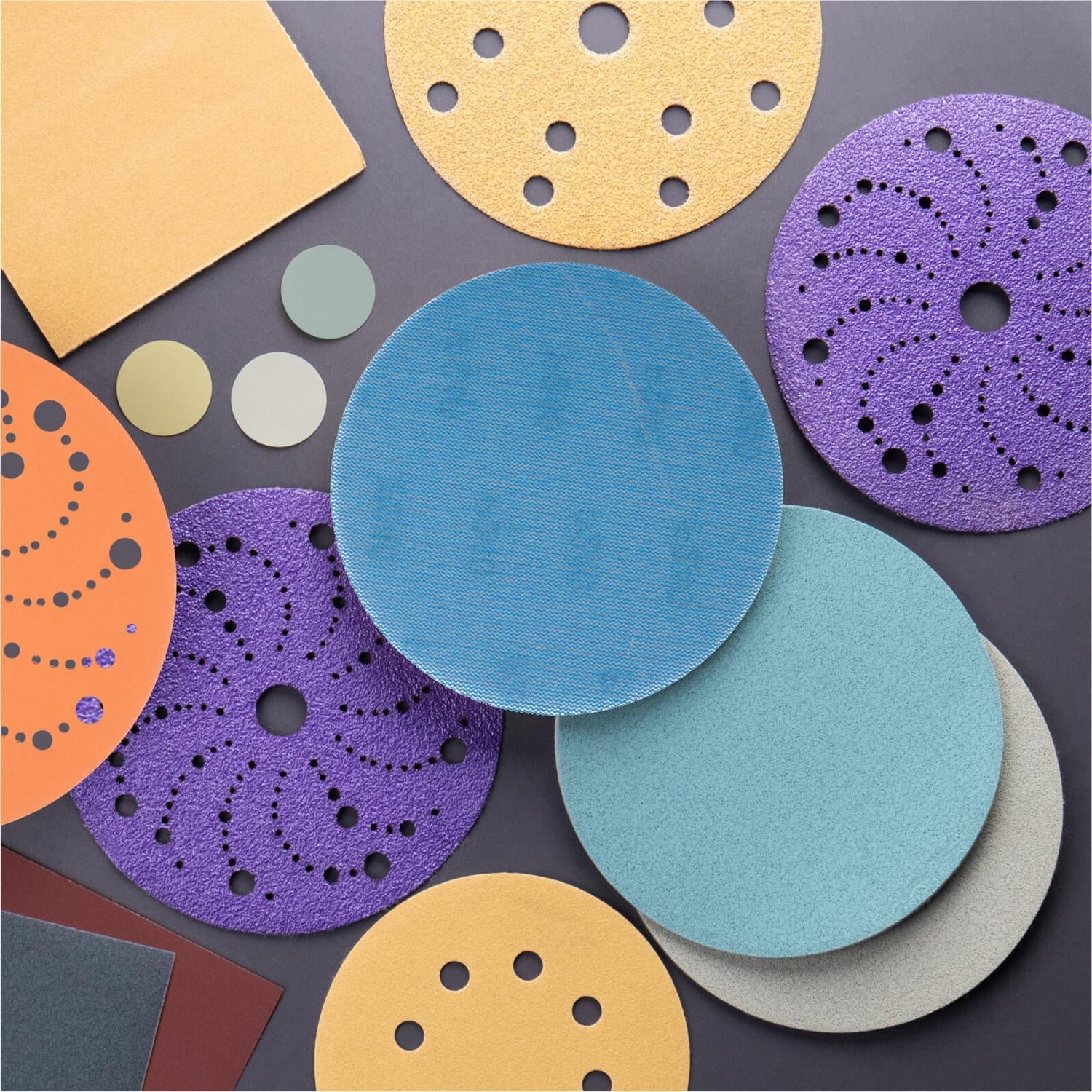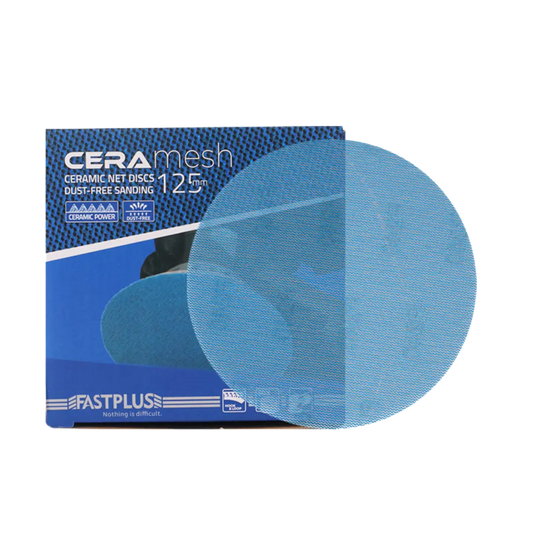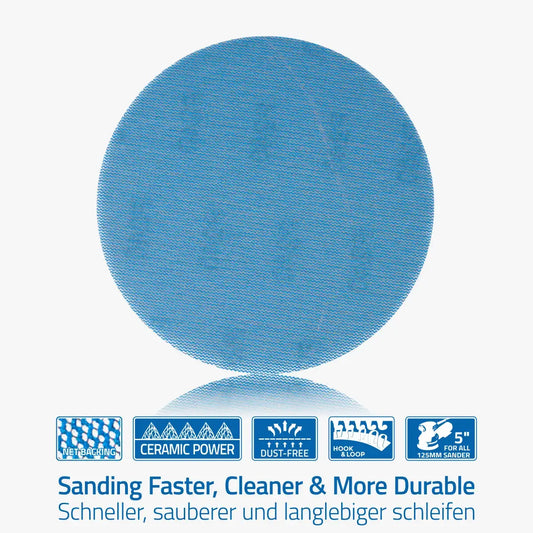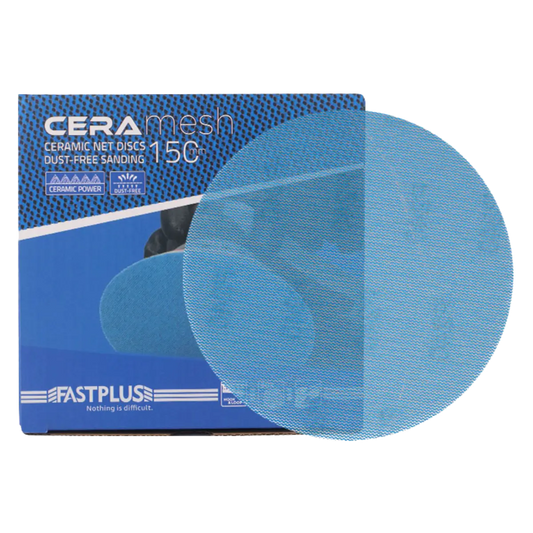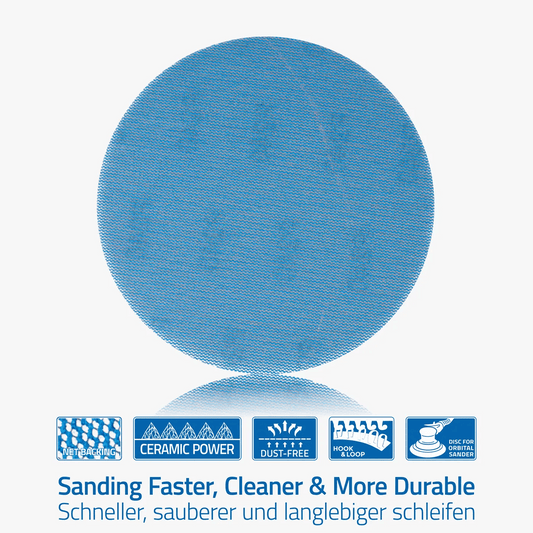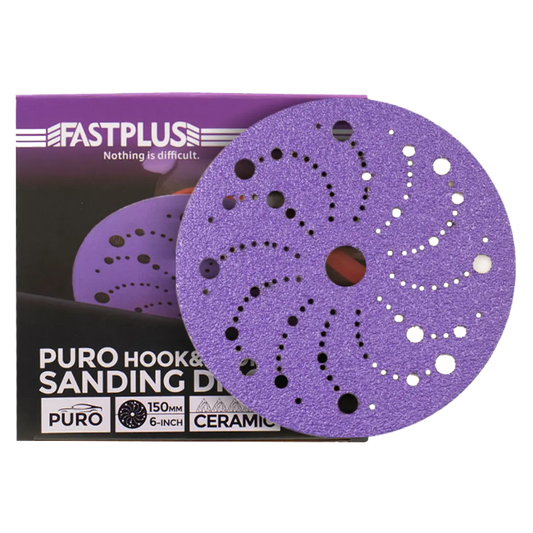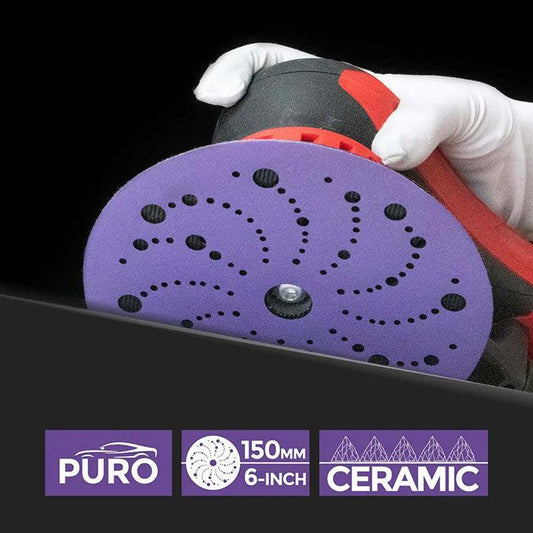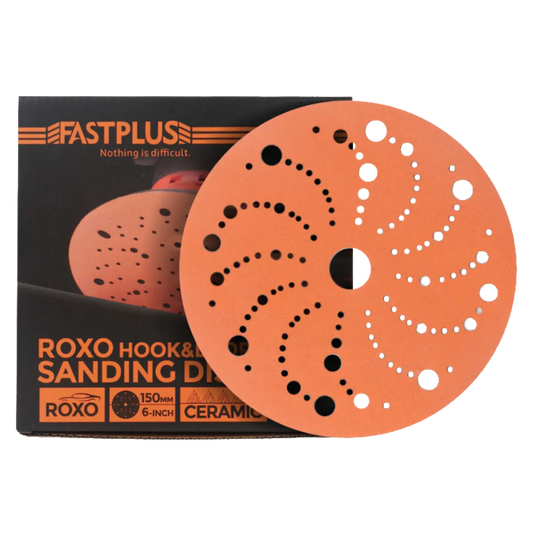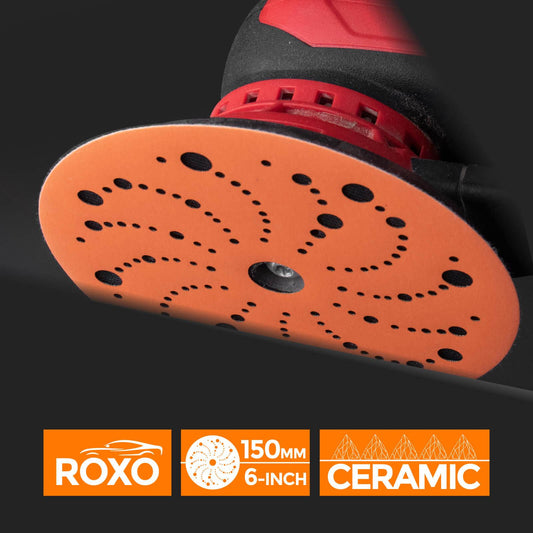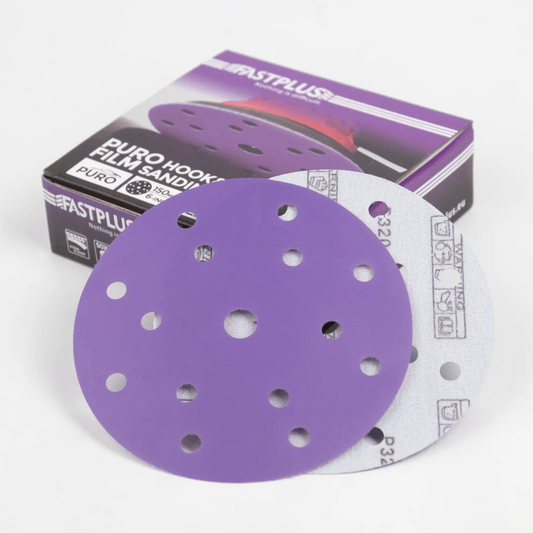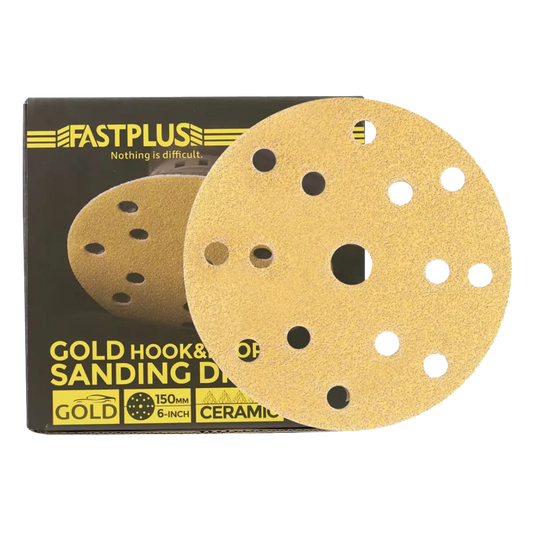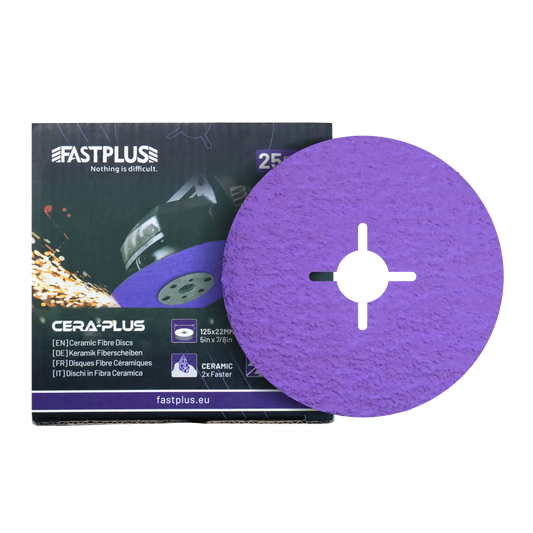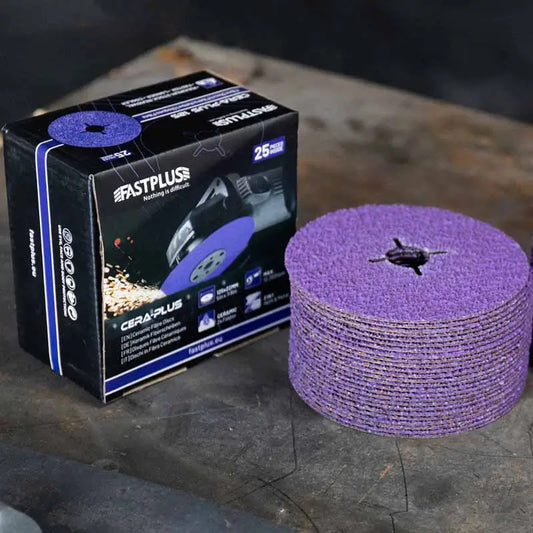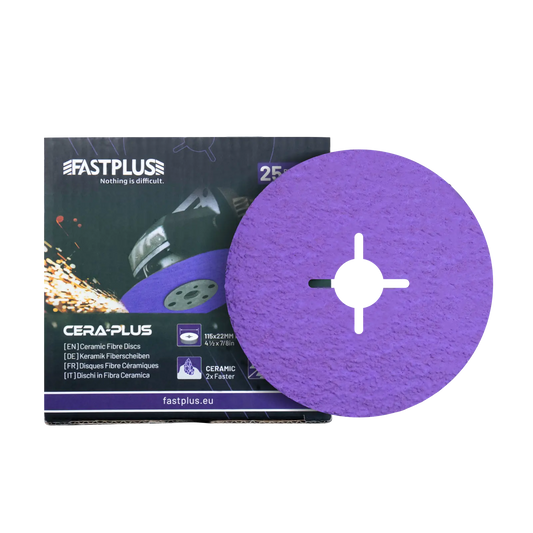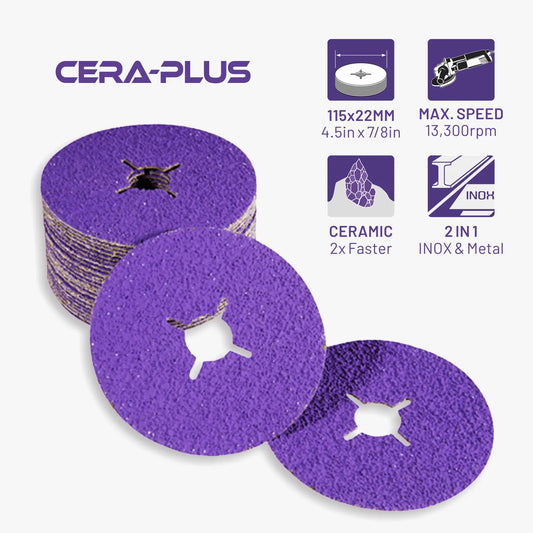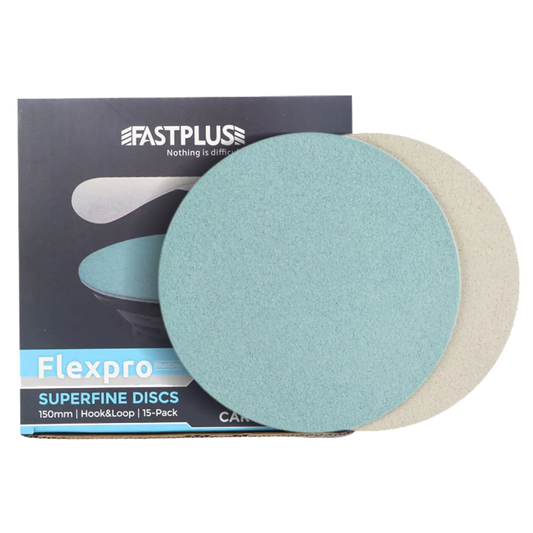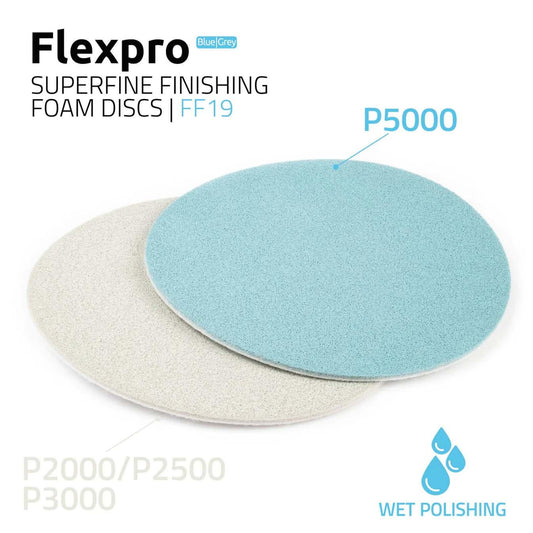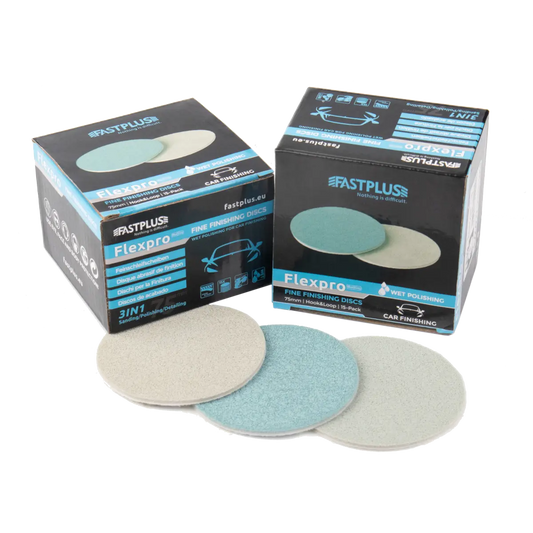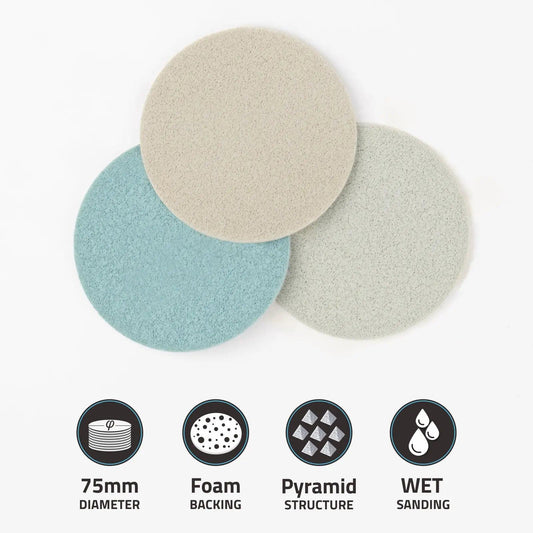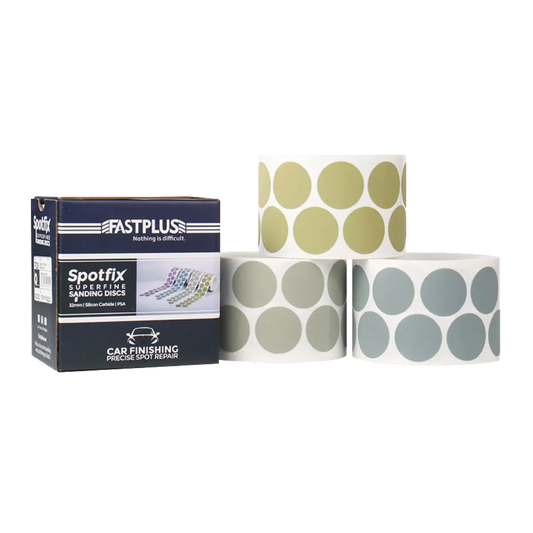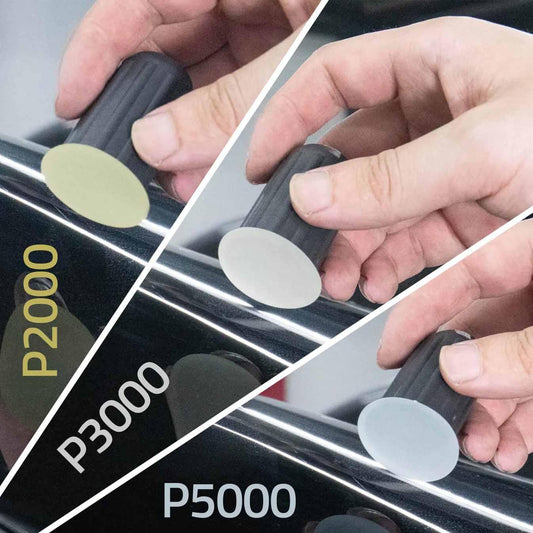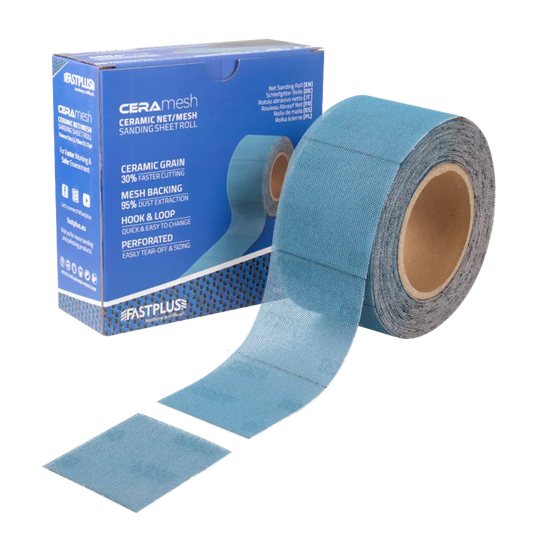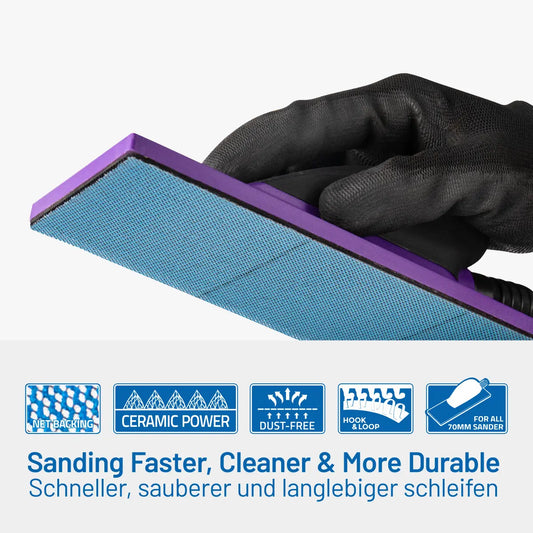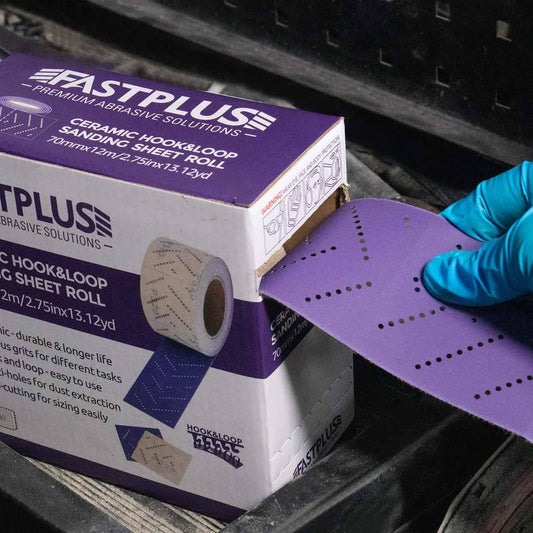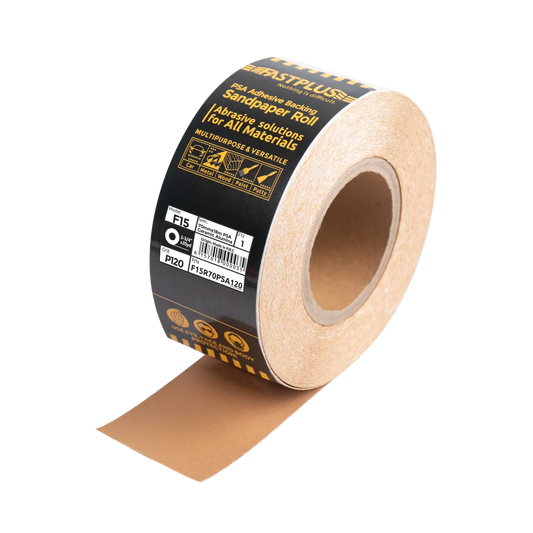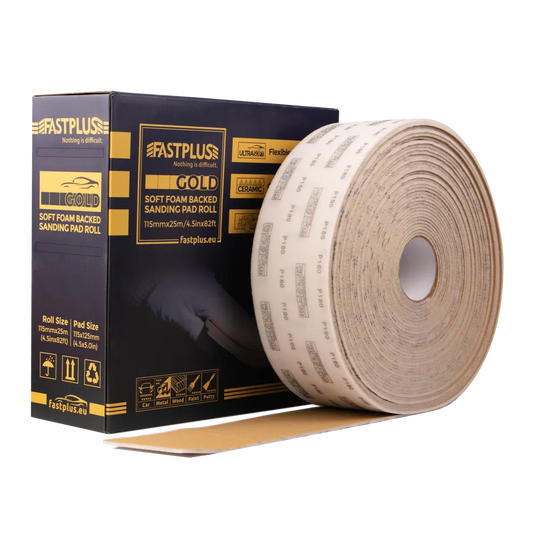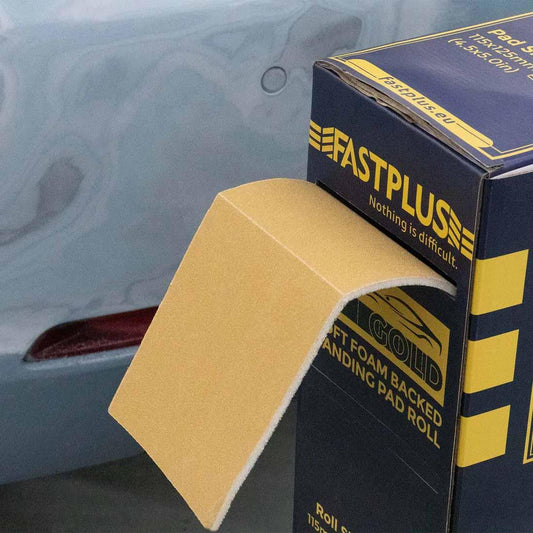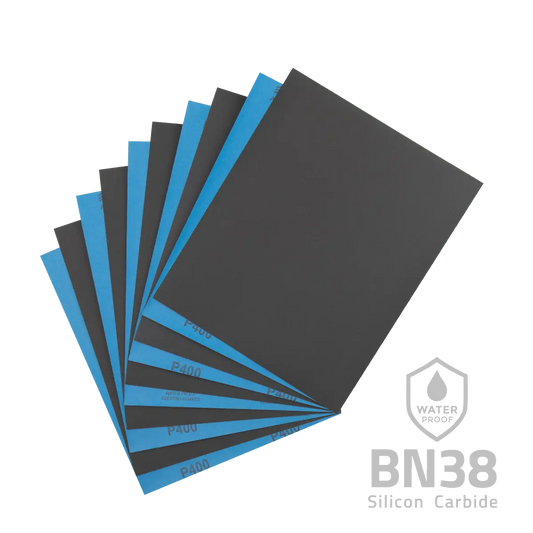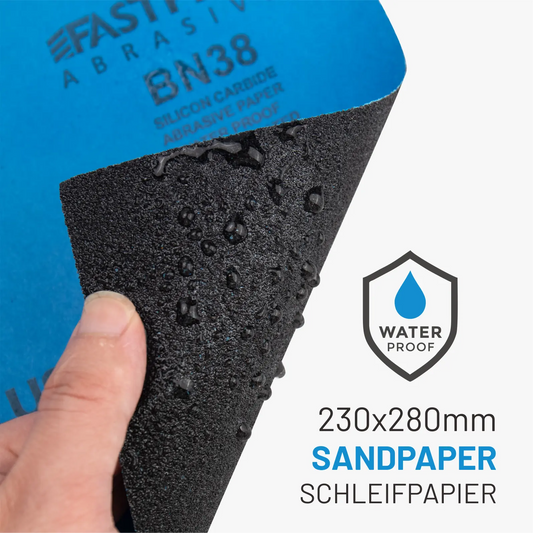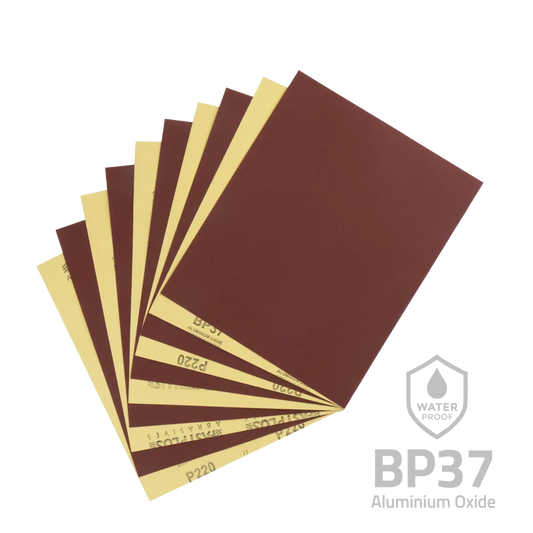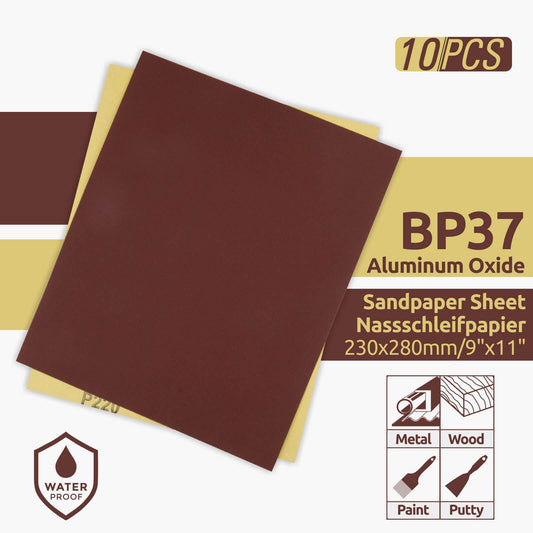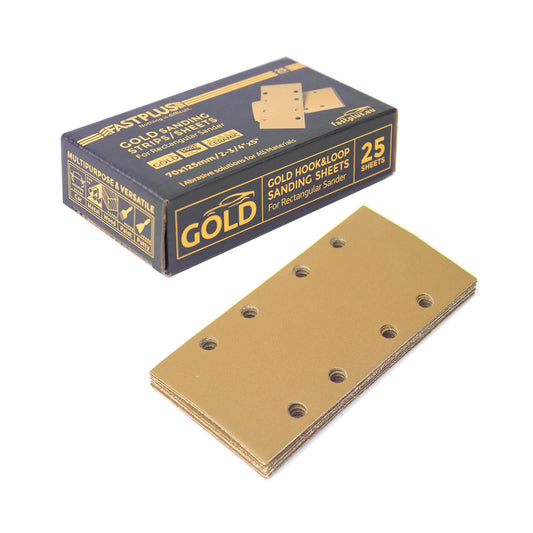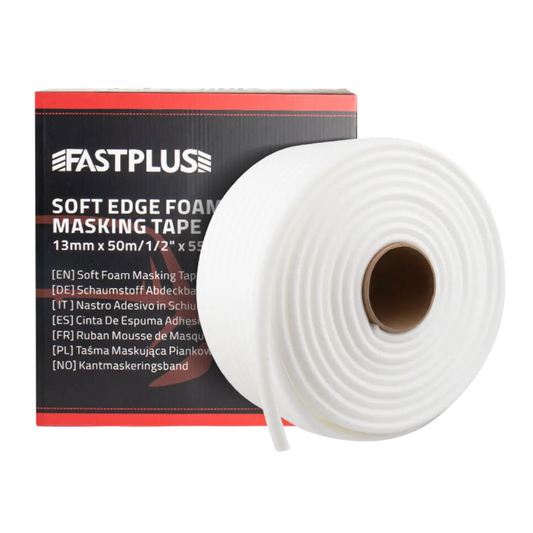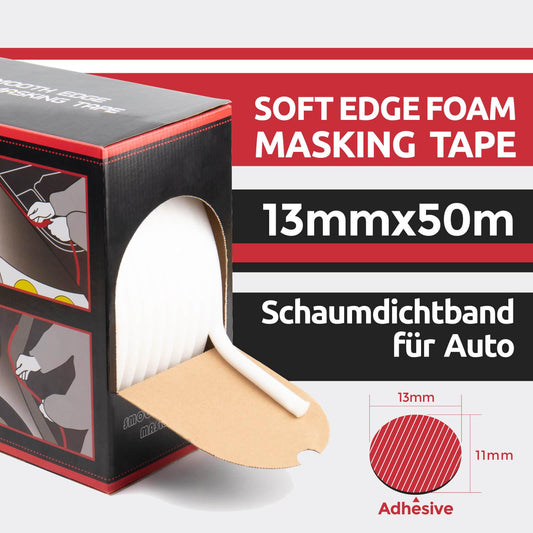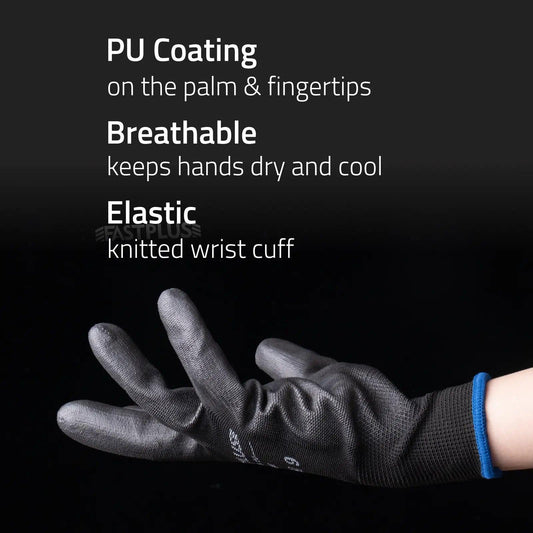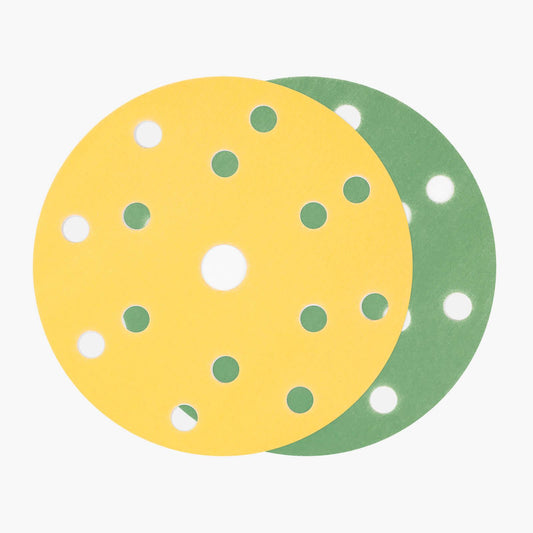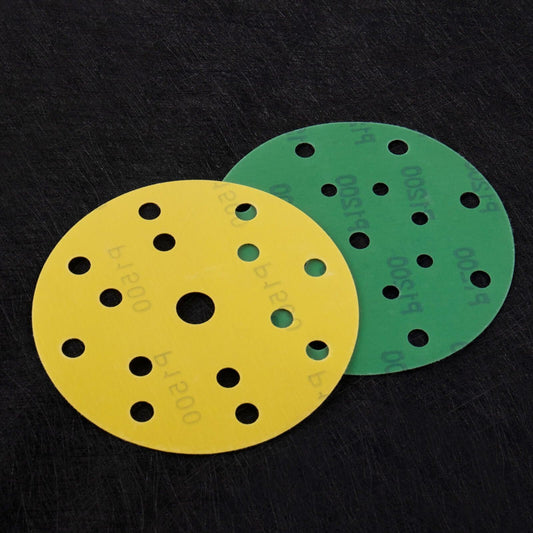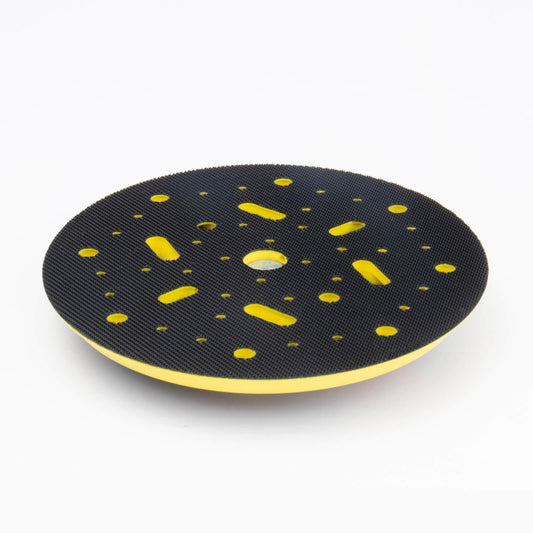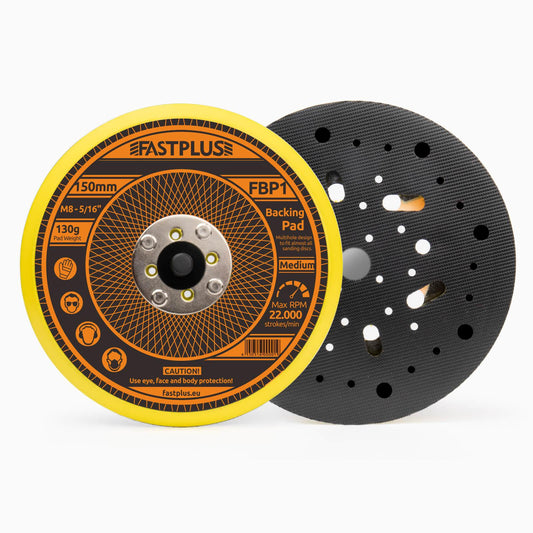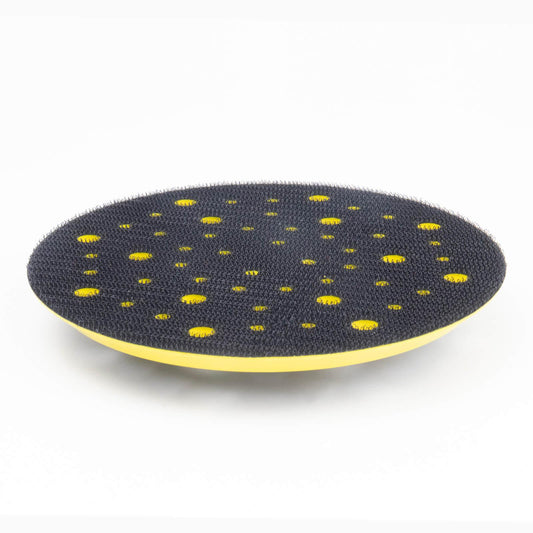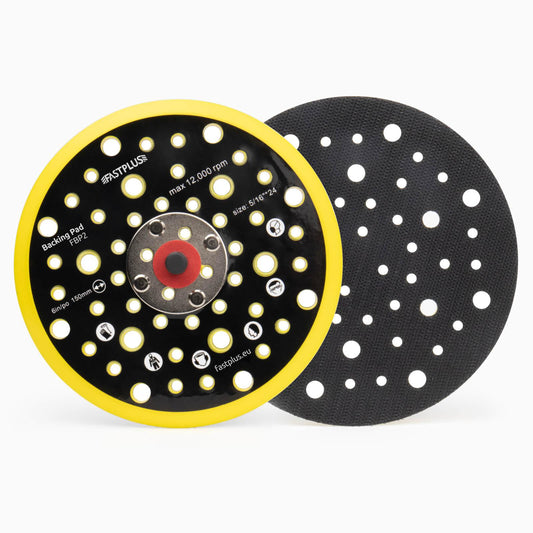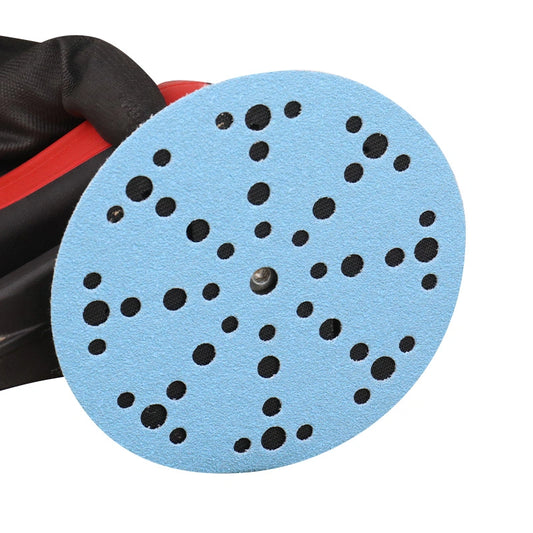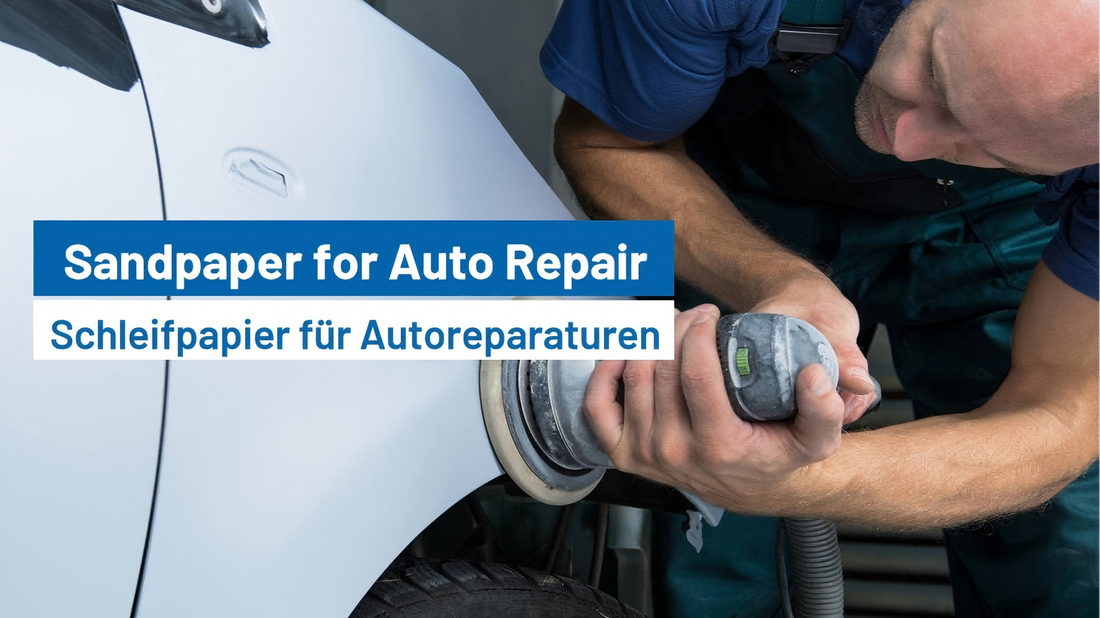
How To Select Sandpaper For Auto Body Repair?
When it comes to auto body repair, achieving a flawless, professional finish starts with one crucial step—choosing the right sandpaper. Whether you’re fixing a scratch, prepping for paint, or smoothing out body filler, the right abrasive can make or break your project. This guide breaks down everything you need to know about how to choose sandpaper for auto body work, including the types, grit levels, and formats best suited for each stage.
Why Sandpaper Choice Matters in Auto Repair
Unlike sanding wood or drywall, auto body sanding requires precision and specific abrasives that can handle metal, paint, primer, and filler without causing uneven surfaces or deep scratches. Using the wrong sandpaper can lead to:

- Poor adhesion of paint or primer
- Visible sanding marks
- Increased rework and wasted time
- Damage to the metal or surface coatings
By understanding how different types of sandpaper work and when to use them, you’ll ensure smoother, cleaner results.
1. Understand the Sandpaper Grit System
The most critical factor in choosing sandpaper is grit size, which refers to the coarseness or fineness of the abrasive particles. Here’s how grit levels typically break down for auto body work:
| Grit | Use Case |
|---|---|
| 36–80 | Stripping paint, removing rust, or shaping body filler |
| 120–180 | Smoothing body filler or feathering paint edges |
| 220–320 | Final sanding before primer |
| 400–600 | Primer sanding or scuffing before paint |
| 800–1500+ | Wet sanding between coats or polishing clear coat |
Start with a coarser grit for major surface shaping, then work your way up to finer grits for finish work.
2. Choose the Right Abrasive Material
Different sandpaper materials are designed to cut through specific surfaces:
Aluminum Oxide
- Durable and long-lasting
- Ideal for sanding bare metal and filler
- Common in sanding discs and rolls
Silicon Carbide
- Sharp, hard grain
- Works well for wet sanding of primer and paint
- Common in wet/dry sheets but less used in high-durability formats
Ceramic Grain
- Extremely hard and self-sharpening
- Designed for aggressive cutting and long life
- Now commonly used in mesh sanding discs for dust-free, high-performance sanding
Zirconia Alumina
- Strong and wear-resistant
- Great for heavy material removal and metalwork
- Used mostly in fiber discs for grinding and blending
3. Know the Different Sandpaper Formats
Auto body repair requires different sandpaper types depending on the task and surface:
1. Sandpaper Sheets
- Ideal for hand sanding or block sanding
- Great for wet sanding operations
2. Sandpaper Rolls
- Economical and versatile
- Cut to size and perfect for sanding blocks

3. Sanding Discs
- Power tool compatible
- Fast, consistent sanding on large areas
- Available in various grits and backings
4. Mesh Sanding Discs
- Made from high-performance ceramic abrasive
- Open mesh structure allows for virtually dust-free sanding
- Ideal for final primer sanding, clear coat scuffing, and smooth surface prep
- Offers longer life and cleaner work compared to conventional discs
5. Fiber Discs
- Heavy-duty discs for rust and paint removal
- Require backing pad and angle grinder
- Best for aggressive metal surface conditioning
6. Finishing Foam Discs
- Ultra-fine, flexible, and soft
- Used in polishing and swirl mark removal
- Essential for final clear coat finish
4. Match Sandpaper to Each Stage of Auto Body Repair
Let’s walk through each repair stage and pair it with the right abrasives:
Step 1: Paint Removal and Rust Stripping
- Use 36 to 80 grit
- Tools: Fiber discs or ceramic sanding discs
- Purpose: Strip down to bare metal
Step 2: Body Filler Sanding
- Start with 80 to 120 grit, then move to 180 grit
- Tools: Sanding blocks, orbital sanders
- Purpose: Shape filler and smooth transitions
Step 3: Primer Preparation
- Use 220 to 320 grit pre-primer
- Post-primer: Use 400 to 600 grit
- Tools: Ceramic mesh sanding discs or abrasive sheets
- Benefits of ceramic mesh: Minimal clogging, smooth finish, and longer usability

Step 4: Base Coat & Clear Coat Prep
- Grit: 800 to 1000
- Tools: Ceramic mesh discs for even scuffing
- Purpose: Prepares primed surfaces for base coat without deep scratches
Step 5: Final Finishing & Polishing
- Use 1500 to 3000 grit wet sanding paper
- Follow with polishing compound using finishing foam discs
- Purpose: Achieve gloss and remove micro-scratches in the clear coat
5. Wet Sanding vs. Dry Sanding
Wet Sanding
- Helps avoid clogging
- Produces a finer finish
- Ideal for polishing and inter-coat sanding
Dry Sanding
- Quicker and messier
- Efficient when removing large amounts of material
- Use with vacuum systems or ceramic mesh discs to reduce dust
6. Power Tool Compatibility
When selecting discs, match the disc size and backing type to your tool:
- Hook and Loop (Velcro) Backing: Easy changes, great for orbital sanders
- PSA (Pressure Sensitive Adhesive): Strong hold, mostly used in DA sanders
- Multi-hole Ceramic Mesh Discs: Perfect match for dust-extraction sanders
The ceramic mesh sanding discs stand out because they combine excellent cutting power with advanced airflow, keeping surfaces cooler and improving sanding visibility.
7. Tips for Best Results
- Always sand in stages—don’t skip grit levels
- Use guide coats to check for low/high spots during filler sanding
- Clean surface thoroughly between grits
- Use ceramic mesh discs to reduce airborne dust and extend disc life
- Use foam discs and polishing pads at the end for a swirl-free shine
8. Stock Up Smartly
For professionals and serious DIYers, a complete abrasive kit includes:
- Coarse-to-fine sandpaper sheets for manual control
- Sanding rolls for flexible use on edges and filler shaping
- Durable ceramic sanding discs for fast paint removal
- High-efficiency ceramic mesh discs for primer and paint prep
- Fiber discs for heavy-duty grinding
- Foam finishing discs for a polished, professional result
At our store, we stock all of these in a range of sizes and grits, ready to ship. Whether you're sanding down an old classic or fixing a fender bender, we have the abrasives to help you get the job done right.
Final Thoughts
Choosing the right sandpaper for auto body repair involves more than just picking a grit. You need to consider the abrasive material, the application stage, and the surface condition. Ceramic abrasives—especially ceramic mesh sanding discs—are quickly becoming the preferred choice for pros who want cleaner, faster, and more consistent results.

Need help selecting the right products? Browse our full range or reach out to our experts.
Shop High-Performance Automotive Abrasives Now
👉 View All Products
